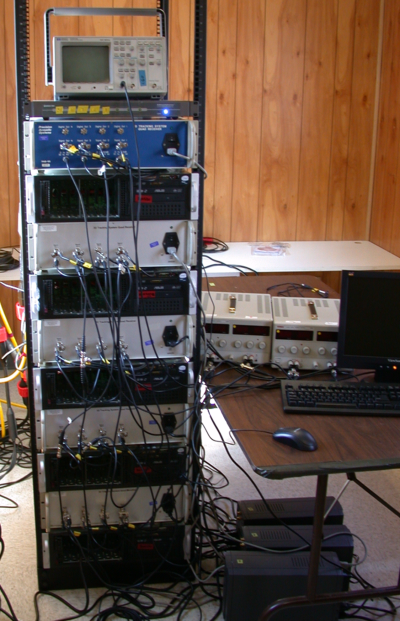Cabled Receivers
To monitor passage behavior and passage timing for JSATS-tagged fish at dams on the Columbia River, researchers deploy cabled JSATS receivers across the powerhouse and spillway. Each cabled receiver consists of four hydrophones connected to a four-channel receiver linked to a high-end desktop computer (Figure 1). Within the computer are two multichannel digital signal processing cards, a Global Positioning System (GPS) card, and the software necessary to acquire and decode acoustic signals from JSATS transmitters. To monitor the primary routes of passage available to migrating fish, two hydrophones are installed at different elevations on every pier nose (one deep and one shallow) between turbine units and spillway bays. Receiver clocks are synchronized to the universal GPS clock, resulting in detection time accuracy on a single system of up to 250 nanoseconds and across multiple systems up to 500 nanoseconds. The time-of-arrival differences across multiple hydrophones are used to solve for the three-dimensional position of each tag transmission. These positions can then be used to form a precise three-dimensional track of the fish to determine the behavior or route of passage of tagged fish as they approach a dam.

More information on autonomous receivers and their deployment can be found at:
A fast and accurate decoder for underwater acoustic telemetry
